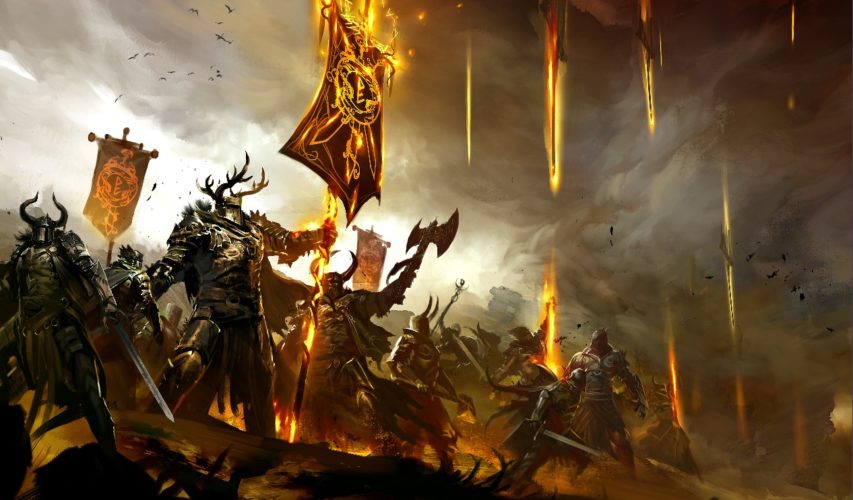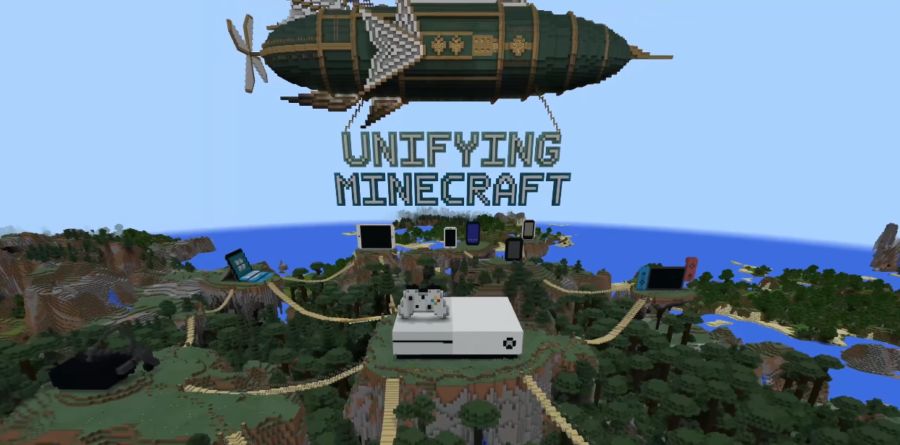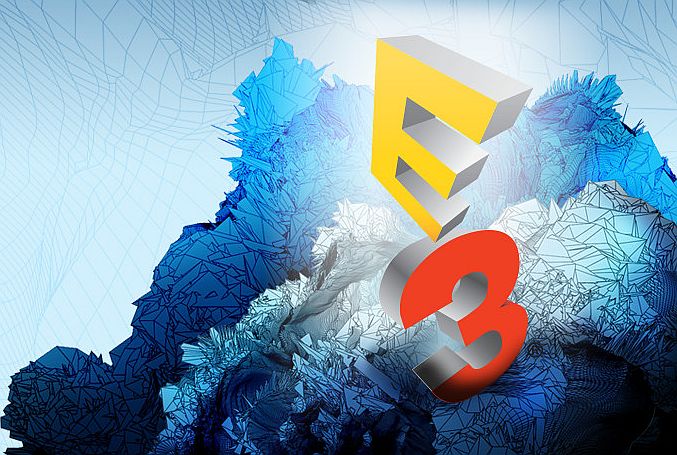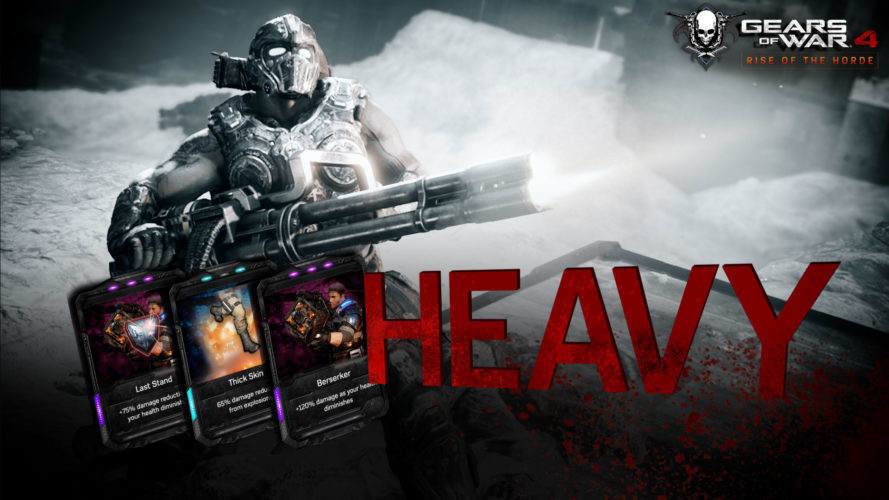Mainstream
Next-Gen Prep: The Evolution of the Xbox 360

 The day is May 12, 2005. Apple’s silhouetted iPod commercials mirror the relevance of the device itself and that of MTV. Elijah Wood is in the midst of his post “Lord of The Rings” stardom and the eyes of America are on him as he hosts an Xbox and MTV collaboration event. Microsoft is climbing out of their bunker after the thrashing they received from the Playstation 2, and they are ready to get a head start on the next battle.
The day is May 12, 2005. Apple’s silhouetted iPod commercials mirror the relevance of the device itself and that of MTV. Elijah Wood is in the midst of his post “Lord of The Rings” stardom and the eyes of America are on him as he hosts an Xbox and MTV collaboration event. Microsoft is climbing out of their bunker after the thrashing they received from the Playstation 2, and they are ready to get a head start on the next battle.
Right off the bat they were toting the digital future (promising to change digital entertainment forever) and “the future of gaming” was revealed with a console shot, and the system boot screen. The first official mention of “Xbox 360” was uttered so casually that it made it seem immediately normal, not necessarily as ridiculous as it may have felt in rumors. The reveal videos looked great, including a 100% CGI Madden video and a not-too-shabby Saints Row clip, and the next generation felt in full swing already. This biggest push was that of Perfect Dark Zero, which seemingly scratched that nostalgia itch and ramped up all of gaming in one package. With their big reveal completed, it was clear that they had the momentum. Sony was sitting quietly, confidently. More would be revealed at E3 for both.
That June, E3 came and went. Microsoft showed the console again, referencing the future of entertainment again, and stressing playing with friends and customizing games to ones preference. The first appearance of the “blades” dashboard seemed so great at the time. Clean and organized. Even then, though, the faceplate changing gimmick was lackluster. Games were shown, we all know how these things go, but they mainly made promises of digital entertainment, that they did fulfill eventually, and “the most powerful game console” which is debatable at best from a hardware standpoint. They also shared numbers on their Xbox Live platform, and promised to take it to the next level with the player cards featuring a bio and gamer pictures, among other things. Microsoft came out as clearly a company serious about its games division. They knew what would excite people, and they stuck with what they had, in stark contrast to the company today. The console would release in the holiday season of that year, to no competition from Sony, or Nintendo for that matter, and with its release the origin story of the Xbox 360 ends.
It’s the 23rd day of November in the year 2005. The Xbox 360 hit store shelves yesterday, and reports that Microsoft began mass production on the console a little over two months ago were confirmed by empty spaces that now filled shelves. Well-off families head to Ebay to find their child’s most sought after Christmas gift. Microsoft is off to an amazing start. With a list of decidedly launch-quality games, the Xbox 360 enjoyed the fervor of customers in an uncontested holiday season. The momentum would continue into the foreseeable future as they continue to support the system with quality games. Some bad press would soon hit, however, in the form of a seriously high failure rate due to the “Red Ring Of Death.” The company quickly instituted a longer warranty against the problem and was providing Xbox Live monthly cards for inconvenience when they were replaced. The steps they took severely minimized the general backlash for the systems failing. The first year of the Xbox 360’s reign was a booming success.
Over the course of the next couple years, Microsoft would take to the stage at E3 and continue to push games on their systems. They would introduce HD updates for classic arcade and legacy console games such as Sonic the Hedgehog and Contra in 2006, marking the rise of the Xbox Live Marketplace. That year, they would also debut sequels to some of their most popular series like Fable and Halo, along with some new IPs that would be exclusive in FEAR and Gears of War. The conference in 2007 was again about games, rather than the console itself, with the appearance of Mass Effect and more Halo 3 to scratch that exclusive games itch. The company clearly held games first in its mind, as it had all along, but had yet to truly innovate digital entertainment as they had promised.
It was in 2008 where things really started to change with the Xbox 360, showing that they would continue to up the ante with their system. A complete overhaul to the once-shiny, now-dingy dashboard was in the cards for that fall, as well as the introduction of avatars, to further personalize the console experience. Immediately after the GUI update (dubbed Next Xbox Experience by the founders) the Xbox 360 as it had been recognized was gone, and with that change in appearance seemed to come a change in identity. It was in this period when they started their independent developer friendly system, which lead to the launch of Braid, and that lead directly to other indie projects jumping on board for the next several years, especially when they introduced the Xbox Live Indie Games section in which those who desired could make a game in XNA and attempt to publish through Microsoft.
A year later, when the console was at the height of its life, Microsoft announced the Kinect at E3 2009. In what could be viewed as an extremely late gut reaction to the success of the Wii, the initial announcement of the Kinect was met with a mixture of wonder and reservation. The technology behind the controller-less gaming concept was fascinating, but it remained unclear whether it would pan out in an effective way to make it worthwhile. It would not be until a year later, November 2010, when consumers would get their hands on it (along with a redesigned, slimmer console) to see if it was worth the hype. It was the release and subsequent content focus on the Kinect that may have changed the Xbox 360 landscape once again.
The next few years, leading up to the present, see the console fall from grace in large part. There were a few more drastic dashboard updates, which evolved with Windows 8 and kept the interface from growing stale, but Microsoft was so desperate to push the Kinect, a device that was not catching on with consumers, it seems the company lost focus on its core games. Even its stock of indie games had a severe downgrade in quality and quantity. They even went so far as to hide the Indie Games store front with one of its most recent dashboard overhauls. To their credit, though, they continued to add entertainment apps to the system to further its status as an entertainment hub. From Internet Explorer to an IGN news app, the console was trying to become a living room PC, minus the games, it seemed. Of the few exclusives the console held in the most recent years, most centered around the Kinect, and a large chunk were not received well at all. (I’m looking at you Steel Battalion and Gears of War: Judgement!)
Fast forward to the present day. The Microsoft has released a second console redesign, which looks closer to their next console than the current, the average console has more apps installed on it than games, and a startling one (1) exclusive has been released this year. Microsoft has clearly been prepping for the next generation battle (which is an entirely different subject) at the expense of supporting its current console which will ultimately shun the loyal fans who cannot afford or find an Xbox One on the shelf for the next few months or more. And while they have back-pedaled their way into a pretty nice looking console this fall, they may start the next generation as they ended this one– limping.
Gaming News
Best Usenet Newsgroups for Gaming

Usenet newsgroups may seem old-fashioned to many. In reality, they are the perfect place for players who love the classics but are always open to new games and strategies. These internet communities are also ideal for those searching for gaming material, solutions to issues, or a conversation related to their favorite video games. Whether you are an experienced player or entering this domain for the first time, Usenet holds a ton of resources that could change how you interact with the gaming world.
Understanding Usenet Newsgroups
Usenet newsgroups, which include gaming groups, are like message boards. People can post messages and articles in different categories. Each group is a special place for certain topics – this makes it simple to find the subjects you want to read about most. The unique characteristic of Usenet lies in its decentralized structure. This permits a much more open interchange of details and information than what is seen on regular social media platforms or forums.
Initially, Usenet was utilized only for academic and professional exchanges. However, it soon turned into a prevalent method for communicating among hobbyists and gaming groups. Presently, even though Usenet has been surpassed by newer platforms in terms of popularity, it continues to be an important tool for knowledgeable users who value its special mix of staying anonymous with fast communication. Knowledgeable users also love access to vast archives containing historical information and software applications that are no longer available elsewhere on the Internet.
Top Usenet Newsgroups for Mobile Games
comp.mobile.games
This is a fresh group dedicated to discussions about mobile games and related technology matters within the industry. Here, you can find conversations about the coding aspects of creating games for mobile devices, like new updates in platforms or fresh game engines being used for development purposes.
rec.games.mobile
The perfect place for people who play games on their mobile devices as a hobby. Here, users talk about strategies, tricks and discuss game evaluations. This group is also suitable for those who are not serious gamers but like to connect with others and discuss playing strategies.
alt.games.mobile
In this newsgroup, users often discuss gaming fixes and give each other suggestions. It is also the go-to place for gamers and die-hard fans that wish to find each and every detail of the game they love to play.
Best Newsgroups for Video Game Discussions
Newsgroups such as alt.games.video and rec.games.video.arcade have lively communities where gamers often engage in exchanges and conversations. These forums are not only for resolving gaming issues or writing reviews; they are centers of enthusiastic discussion regarding gaming culture, strategy, and creation process. Be it the latest RPGs, energetic shooters or old-school arcade games – there is always a thread bustling with discussion.
In these threads, not only will you encounter a variety of views from across the globe, but you may also land on gaming tricks and shortcuts that are lesser known. For those who are new, remember that every group has its own tone and rules. Lurking for a while should help you understand community norms and ensure your contributions are accepted.
Specialized Gaming Newsgroups
Specialized newsgroups are designed for particular gaming communities. They provide a discussion environment that is more centered and focused. These groups are ideal for users who really love a particular game and want to explore it in great depth.
The benefit of these specific groups is their collection of very particular details. Gamers who are part of such a group often exchange unique things like custom mods or skins, and offer advice on how to make gameplay more efficient and fun.
Tips for Using Usenet Newsgroups for Gaming
To enter Usenet, you will first need to pick a provider that is well-known for security, high retention rates and fast speed. To make the right pick, it is a good idea to get the rankings for the best Usenet providers. Next, get advanced newsreader software, as this will allow you to browse through newsgroups easily and manage your activities effectively.
Focus on newsgroups related to gaming and participate in discussions matching your interests to find gaming buddies. Also, make sure that you follow the netiquette of each group while doing so. Utilize newsreader software functions like filters and automation to keep things simple.
Conclusion
Usenet, at first sight, can appear as a choice for oldies or people that have not yet acclimated to social media platforms and forums. However, its distinct characteristics make it very useful for all kinds of gamers. If you are searching for uncommon information, looking for detailed conversations or wish to join a community that matches with your specific interests; Usenet is surely the place for you. Jump in to see how Usenet can add another element of fun to your gaming experiences!
Casual
Encouraging Growth and Motivation: Resources for Child Development

Child development is a complex journey marked by critical milestones where each stride forward builds upon the foundation of the previous one. Acknowledging children’s individual needs, pediatric therapy services tailor strategies to foster physical, emotional, and cognitive growth. To support this transformative process, environments that prompt curiosity and engagement, coupled with advanced educational tools, play an instrumental role in shaping young minds. These resources, carefully selected and applied, can significantly amplify a child’s developmental trajectory. Keep reading to learn about the effective ways these tools and techniques can aid in advancing childhood milestones.
Pediatric Therapy Services: Enhancing Developmental Milestones
Pediatric therapy services support children as they reach and surpass developmental milestones. These services, often provided by skilled therapists, address various growth challenges, ensuring each child has the best possible start in life. From speech and occupational therapy to physical and behavioral interventions, these professionals tailor their approach to meet the unique needs of every young patient.
Therapists work relentlessly to motivate children, fostering an environment where milestones are not merely achieved but celebrated. Through personalized, one-on-one sessions, children gain the confidence and skills necessary to navigate their developmental journeys more easily. The trust between therapist and child is a solid foundation for consistent progress and paves the path for lifelong learning and adaptation.
Resource provision is a key component of pediatric therapy, equipping parents with the tools to continue therapy practices at home. Effective communication between therapists and families ensures a cohesive strategy that envelops the child’s daily routine, enhancing the therapy’s impact. It also allows parents to identify subtle progress, reinforcing their pivotal role in the child’s developmental success.
If you’re looking for pediatric therapy in your area, a simple Google search like “pediatric therapy Arizona” will help you find local providers and services tailored to your child’s needs, ensuring they receive the specialized care necessary for their development.
Optimizing Play Spaces: Creating Environments for Learning and Exploration
Optimized play spaces are vital platforms where children engage with their world, build skills, and unleash their creativity. Designers of such areas pay astute attention to elements that promote safe exploration and intellectual stimulation. A thoughtfully arranged play environment serves as a place of entertainment and a crucible for burgeoning development.
Professionals incorporate a variety of tactile and visual stimuli within play areas to cater to diverse developmental needs and interests. Stimulating sensory experiences is central to cognitive and motor skill refinement among younger populations. The intentional selection of colors, textures, and interactive features sparks curiosity and encourages physical activity, which is fundamental to healthy growth.
Accessibility remains paramount in creating play spaces, ensuring they cater to children across all abilities. Including adaptive resources within these environments demonstrates a commitment to inclusive development, allowing every child to participate and benefit from the joy and learning play offers. Such inclusiveness fosters a sense of community and belonging, which is essential for emotional and social development.
Affording children autonomy in their play advances self-directed learning and problem-solving capabilities. When children feel empowered to make choices within their play, they better understand their preferences and abilities, setting the stage for confidence and self-awareness — qualities that are instrumental as children grow and transition through life’s stages.
Additionally, incorporating elements like fake plants or outdoor plants from retailers like Nearly Natural outdoor plants into play spaces can enhance children’s sensory and aesthetic experience.
Interactive Learning Tools: Technology and Resources for Cognitive Development
Interactive learning tools harness technology’s power to solidify children’s cognitive development. These digital resources provide an array of engaging, educational content that aligns with critical thinking and problem-solving skills.
Software and applications designed for children’s learning capitalize on the allure of multimedia to capture young minds. Effective education solutions provide children with stimulating challenges that are age-appropriate and aligned with developmental targets.
The discerning use of educational technology in classrooms and homes can reinforce concepts and skills taught through traditional methods. It creates a harmonious blend of instruction and interactive play, thereby cementing a child’s understanding and retention of information.
Providers of such educational platforms are ever vigilant, updating content to reflect new educational strategies and the latest academic research. Thus, children equipped with these technological tools remain at the vanguard of current learning methodologies, all while engrossed in fun and dynamic ways.
Overall, caregivers and educators can provide comprehensive support for children’s developmental journeys by integrating pediatric therapy services, optimized play spaces, and interactive learning tools. These resources nurture their physical, emotional, and cognitive growth and cultivate a lifelong love for learning and exploration.
Features
Why Investing in Academics Is Investing in Yourself

The quest for knowledge and self-improvement through academic pursuits is more than just a milestone in life; it is a cornerstone of personal development and success. Committing resources to further education is not merely an expense; it is an investment with considerable returns that extend far beyond the classroom. Education equips us with the tools required to navigate an increasingly complex world, opening doors to opportunities and fostering personal growth. Keep reading to discover why allocating time and resources to your academics is a decision that pays dividends for a lifetime.
The Lifelong Returns of Investing in Your Education
Investing in education is akin to planting seeds that blossom into numerous opportunities. Beyond financial gains, education forms the bedrock for career success and personal fulfillment. It empowers individuals to pursue their passions, enhances job satisfaction, and boosts self-esteem through academic achievements. Education serves as a catalyst for social mobility, breaking cycles of poverty by equipping people with the skills needed to improve their lives and contribute positively to society.
This ripple effect extends to lower crime rates and increased civic engagement, benefiting communities at large. Beginning with scholarships for high school sophomores can provide the initial support needed to embark on this transformative journey. These opportunities signify a commitment to nurturing future leaders and fostering a culture of lifelong learning and achievement.
Personal Growth and Lifelong Learning Through Education
Education is a vital aspect of personal development, providing opportunities for growth, character building, and discovering passions and capabilities. It fosters resilience and adaptability, which are essential in all aspects of life. A strong educational foundation encourages lifelong learning, ensuring individuals remain relevant and proactive in their professional and personal lives.
Education also broadens perspectives, exposing individuals to diverse ideas, cultures, and worldviews, fostering empathy, cross-cultural understanding, and appreciation for the human experience. It also allows for critical assessment and engagement with the world from an informed standpoint. The journey through academia often involves self-discovery, helping students uncover their strengths, weaknesses, interests, and values, leading to a more fulfilled life with aligned choices and goals.
Expanding Your Horizons: The Social Benefits of Academics
Academic investment in education is about building social capital through interactions with peers, faculty, and industry professionals. These interactions foster communication skills and relationships, which are crucial for life stages. Extracurricular activities in academic settings provide platforms for students to express themselves, learn new skills, and take on leadership roles.
Collaborative projects and team-based assignments teach students the importance of teamwork, compromise, and collective pursuit of goals. Higher education institutions also serve as a microcosm of society, requiring social awareness and finesse to navigate the diverse cultural, economic, and ideological perspectives.
How Academic Achievement Propels Professional Success
Professional success often hinges on a blend of experiences and achievements, with academic accomplishments playing a crucial role. Excelling in academia fosters a strong work ethic and sharp time-management skills, highly valued in today’s job market. Employers frequently use academic credentials to gauge candidates, especially for specialized roles like those requiring an aa in paralegal studies, where in-depth knowledge is pivotal.
Moreover, higher education equips individuals with specialized knowledge and technical skills that are indispensable in complex roles. Critical thinking and problem-solving abilities, nurtured during academic pursuits, further enhance one’s capacity to tackle challenges creatively. The networks formed during academic years often open doors to valuable career opportunities through mentorships and connections.
Leveraging Educational Investments for Career Advancement Opportunities
Investing in education can significantly impact career advancement, as academic qualifications often lead to promotions, leadership roles, and exclusive professional circles. Continuous education can lead to specialized career paths with higher salaries and statuses, especially in evolving fields. Higher education institutions offer career services like resume-building workshops and job placement programs to help students transition from academia to the workforce effectively.
For those already in the workforce, further education can be a strategic move for career change or progression, with flexible online programs and part-time options allowing working professionals to pursue additional qualifications while maintaining their current positions.
Altogether, the investment in academics is a far-reaching decision that impacts not just your immediate circumstances, but your future potential. As you prioritize your academic pursuits, you build a stronger foundation for success in every aspect of life—professionally, personally, and socially.
-

 Guides5 years ago
Guides5 years ago6 Proven Ways to Get more Instagram Likes on your Business Account
-

 Mainstream10 years ago
Mainstream10 years agoBioWare: Mass Effect 4 to Benefit From Dropping Last-Gen, Will Not Share Template With Dragon Age: Inquisition
-

 Mainstream6 years ago
Mainstream6 years agoHow to Buy Property & Safe Houses in GTA 5 (Grand Theft Auto 5)
-

 Casual1 year ago
Casual1 year ago8 Ways to Fix Over-Extrusion and Under-Extrusion in 3D Printing
-

 Mainstream12 years ago
Mainstream12 years agoGuild Wars 2: The eSports Dream and the sPvP Tragedy
-

 Uncategorized4 years ago
Uncategorized4 years agoTips To Compose a Technical Essay
-

 Indie12 years ago
Indie12 years agoCo-op Horror: An Interview With The Developers of Damned
-

 Gaming News1 year ago
Gaming News1 year agoSwiping, Tapping, and Tilting: How Mobile Games Are Played Today






